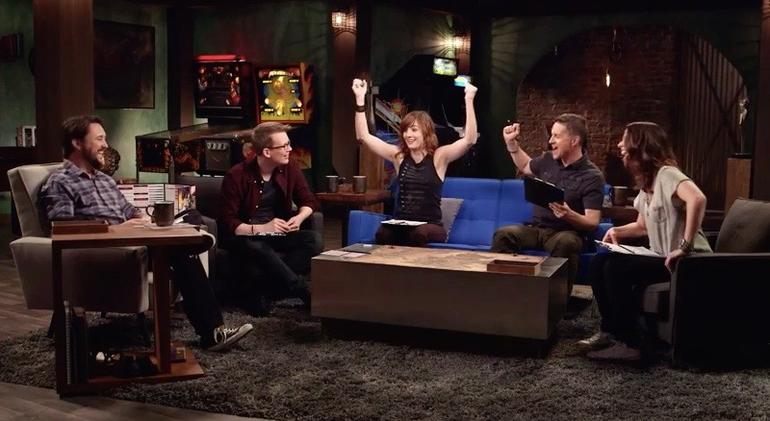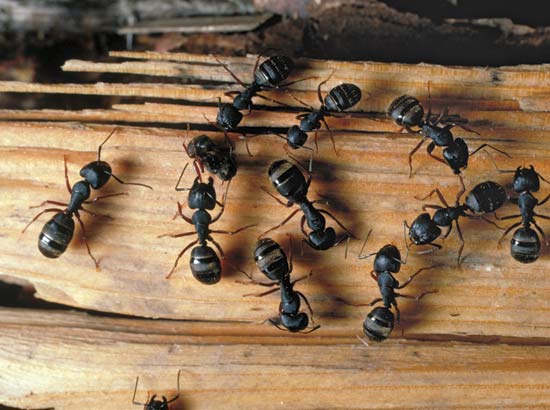One year ago today, on #RPGaDAY, it’s Your Favorite Die or Dice Set.
Huh.
How am I going to get 500 words out of that?
Over on my desk, I have my dice bag. It sits flat when open and can hold slightly more dice than a Crown Royal bag. Inside are four different sets of polyhedrals: a dark blue die set that includes a d30 (which I accidentally used one D&D game session instead of a d20 and didn’t realize until I rolled a natural 24), a green set (that I use when the blue set misbehaves), the remnants of my smoke set (nearly clear, but slightly grey dice) I used during my earlier years that is in the dice bag to share their wisdom and train the other dice to roll well, and a smaller set of clear polys in a smaller bag that my wife got me for Father’s Day last year. Also in the bag are the d10 sets I used when I ran Blue Planet. Ten dark blue (like the primary polyhedral set), ten medium blue, and three lighter blue. When the players were in a lot of trouble – in over their heads – I would roll the dark blue d10s for the “deeper watersâ€. Easier tasks got lighter colored d10s. I don’t think anyone noticed at the table, but I thought it was cool.
All my fudge dice (and the three dice for Happy Birthday Robot – fudge/Fate dice are great for HBR) are in another bag, downstairs in the game room. There’s the garish-colored set of fudge dice in there, along with the Dresden Files fudge dice. No Fate dice in there.
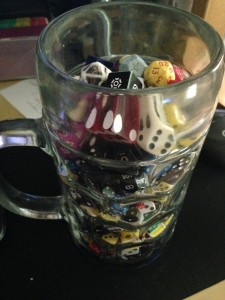 Next to the monitor I’m typing this on, I have a one liter glass stein with almost all of my other dice. And now that I’ve written this far, I realize that my favorite die is in that stein: It’s the Ghostbusters Ghost Die.
Next to the monitor I’m typing this on, I have a one liter glass stein with almost all of my other dice. And now that I’ve written this far, I realize that my favorite die is in that stein: It’s the Ghostbusters Ghost Die.
The only bad thing about this die is the Ghostbusters symbol – the 6 on the die – was printed on a blank face (I think all the pips for 1-5 were painted on, too). All that’s left to discern that it’s the Ghost Die are two reddish smudges on one side. ((West End Games had a few other games where symbols were printed on the faces of blank dice. My copy of Assault on Hoth has several dice with blue smears on two faces and black smudges on two others.)) You included this die as one of the dice in every roll you made.
What I liked about the Ghost Die is every six rolls of the dice, something interesting was bound to happen.
Let’s say your Ghostbuster wanted to eat a phone. Beat the difficulty number and no ghost? You eat the phone. Good job. You ate the phone. Miss the difficulty number and no ghost? You can’t eat the phone and look like an idiot. Ah. But if you beat the difficulty number and roll a ghost? You eat that telephone but forgot to unplug it from the wall – this was the 1980s – and it rings, giving you a nasty shock. Fail and roll a ghost? You’ve got some very expensive and embarrassing dental surgery in your future.
It was really neat and made every roll in Ghostbusters potentially hilarious.
My favorite die: the Ghost Die.
So, do you still like the Ghost Die a year later, Thomas?
You know, I do. It helps that it’s a silly thing from a silly game that makes things even more silly. But I think it has some competition from the boost and setback dice in Fantasy Flight Games’ Star Wars line.
The way the various FFG Star Wars games work is you assemble a dice pool with green d8s and yellow d12s, which have good symbols; and purple d8s and red d12s with bad symbols; and you roll them all at once, cancelling out good and bad symbols until you find the result. It takes a bit of practice deciphering the symbols on each die’s face, but it’s an interesting system. ((For instance, the 7 face on the green d8 shows two symbols: a success in the task and a minor thing that makes things better in the fiction.)) The boost and setback dice are blue and black six-siders that are awarded to the player making the roll for things in the fiction that help out.
They’re also a great tool for filling in the gaps when the GM doesn’t know the exact rule and wants to keep play going. You’re doing something cool? Grab a boost die! Shooting at an exhaust port without your targeting computer’s help? Go for a setback die!
Easy, peasy.
I was running an Edge of the Empire game at Gen Con two years back and we had a scene were a player was shooting at a bad guy that was all tangled up with one of the good guys. Although I had run this scenario before, we didn’t have this particular thing come up. ((And I didn’t own the EotE rulebook, so no time to look up the rules beforehand. There was an EotE rulebook provided at the table, but I had no idea were to look that up.)) Wanting to keep the action flowing, we just chucked a setback die at the problem and went on.
These dice are also great for rewarding coolness at the table. Jumping off the ledge, doing a somersault in midair, then shooting at the bounty hunter as you touch down? Instead of upping the difficulty (swapping a bad d8 to a bad d12), recall that you’re trying to emulate heroic action in the movies — give them a boost die for sticking to the spirit of the genre.
Man, they’re great little cubes.
My girl likes superheroes and I want to get her into a cool supers RPG; we’ve got a few possibilities here, but I was thinking of hacking something together that’s simple. Simple is the key. One of the first things I thought of grabbing were those boost and setback dice. That’s how neat those little dice are.
So yeah. Still love that Ghost Die. But FFG’s boost and setback dice are making their way up there.
Honorable Mention: Fraternitas, from John Wick, as featured in Thirty and a few other of his little games.
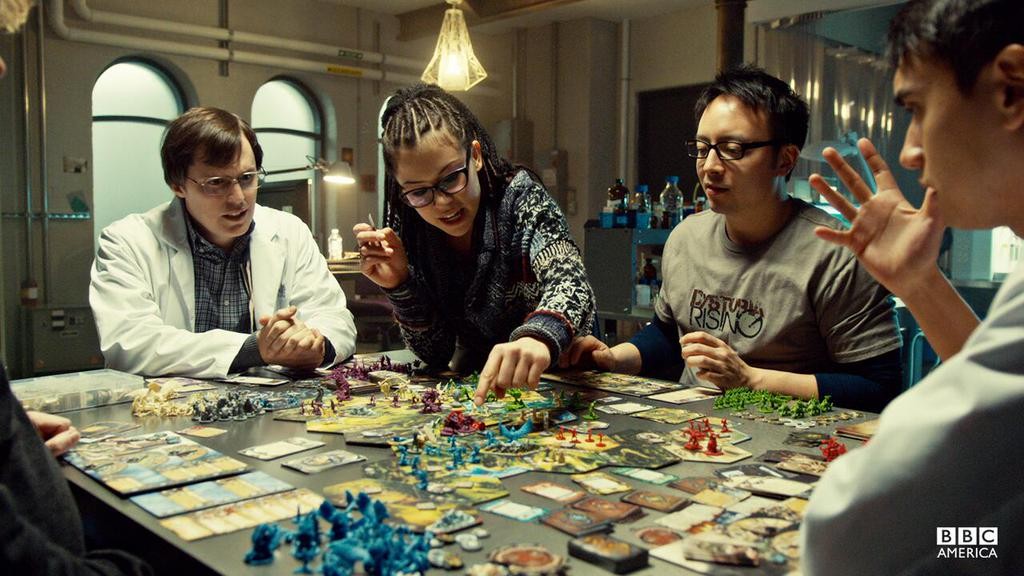
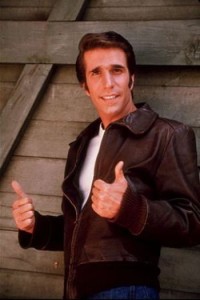 That Dragon Age episode, I particularly didn’t like. It’s an awesome example of what happens when you don’t have a social contract or good buy-in to the game you’re about to play. Pramas brings a dark fantasy game, Hardwick wants to play goofy fun dorkiness, and Wheaton just wants to have fun with his friends. After Hardwick describes his character as Fonzie, whose goal is to sleep with every woman in the setting, there’s a cut to Pramas diplomatically talking about how every group has a player like this. ((Which is complete BS, but this is a show, so rather than scream out in frustration, Chris Pramas takes the high road.)) It’s an amazingly awful start to an episode that several people believe is a good example of gaming. When I mentioned this on Google Plus, one of the responses was, “it felt like Hardwick was mocking my favorite hobby. It really was not fun to watch.” I agree.
That Dragon Age episode, I particularly didn’t like. It’s an awesome example of what happens when you don’t have a social contract or good buy-in to the game you’re about to play. Pramas brings a dark fantasy game, Hardwick wants to play goofy fun dorkiness, and Wheaton just wants to have fun with his friends. After Hardwick describes his character as Fonzie, whose goal is to sleep with every woman in the setting, there’s a cut to Pramas diplomatically talking about how every group has a player like this. ((Which is complete BS, but this is a show, so rather than scream out in frustration, Chris Pramas takes the high road.)) It’s an amazingly awful start to an episode that several people believe is a good example of gaming. When I mentioned this on Google Plus, one of the responses was, “it felt like Hardwick was mocking my favorite hobby. It really was not fun to watch.” I agree.